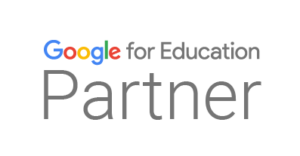In a connected learning environment, schools rely heavily on digital systems. From online assessments to smart classrooms and administrative platforms, almost every aspect of education depends on secure internet access. With this convenience comes a challenge many schools often overlook. How do you keep networks, data, and students safe while ensuring seamless learning
The solution begins with firewalls. A firewall works like a gatekeeper for school networks. It checks every attempt to enter or leave, allowing safe traffic while blocking harmful activity. But not all firewalls function in the same way. Schools need to understand the different types and choose the right strategy based on their unique requirements.
Why Schools Need Firewalls
Devices in school range from desktops in labs to tablets and personal smartphones. Add in digital platforms such as e-learning portals and exam systems, and the risks multiply.
This makes schools an attractive target for cyberattacks. Without firewalls, sensitive student records, exam data, and even day-to-day teaching schedules can be exposed. A properly designed firewall strategy ensures safer internet use, protects privacy, and helps maintain uninterrupted learning.
The Main Types of Firewalls
Firewalls differ in how they filter traffic and how deeply they inspect data. Understanding these types helps schools make informed decisions.
Packet Filtering Firewall
These work like a security guard who checks ID cards at the school gate. Packet filtering inspects basic details such as IP addresses and ports without reading the content inside. They are simple, fast, and budget-friendly, but limited against advanced threats.
Stateful Inspection Firewall
This type monitors the state of connections. It ensures that incoming traffic belongs to an established session, which makes it stronger than packet filtering. Schools benefit from better protection with minimal performance loss, though it still misses highly complex threats.
Proxy Firewall
Also called application-level firewalls, these act as intermediaries. They inspect traffic at the application layer and can block malicious web requests before they reach users. Schools running online portals or hosting learning apps can rely on proxies for added safety, although performance may slow slightly.
Circuit-Level Gateway
These focus on whether a connection is legitimate, such as verifying TCP handshakes. They do not inspect full packet content, which makes them faster but less detailed.
Web Application Firewall
These are designed to protect web applications specifically. Schools with e-learning portals or exam systems can prevent attacks such as SQL injection or cross-site scripting with a WAF. However, they are limited to web-based traffic only.
Next Generation Firewall
NGFWs combine the functions of traditional firewalls with advanced features like intrusion prevention, malware filtering, and deep packet inspection. They can also inspect encrypted traffic. These are ideal for large institutions that need comprehensive security, though cost and complexity are higher.
Which type of firewall works best for schools
For schools, a Next-Generation Firewall (NGFW) is the most effective option. Unlike traditional firewalls that only allow or block traffic, NGFWs add advanced features such as intrusion prevention, application awareness, and real-time threat detection.
They can monitor activity in commonly used tools like cloud platforms, video conferencing, and email, while also filtering harmful websites and blocking malware. Administrators can set different security policies for students, teachers, and staff, making access control more precise.
With digital classrooms and connected devices becoming standard, NGFWs offer the right balance between strong security and smooth learning. Though costlier than basic firewalls, their ability to protect against evolving cyber threats makes them the most practical long-term choice for schools.
Benefits Beyond Blocking Threats
Firewalls are not just about security. For schools, they deliver a range of other benefits.
- Students enjoy safer internet use with harmful sites and content filtered automatically.
- Learning platforms stay reliable as downtime caused by attacks is reduced.
- Data belonging to students, teachers, and administrators remains protected.
- Access policies can be enforced, ensuring distractions like gaming sites are blocked while educational resources stay open.
Limitations to Keep in Mind
No firewall offers complete protection. Schools should be aware of a few challenges.
- Advanced systems can be expensive to install and maintain.
- Deep inspection may affect internet speed if not configured correctly.
- Firewalls need regular updates and monitoring to remain effective.
- Overly strict rules can block useful content along with harmful sites.
Balancing usability with security is the key.
Building a Safer Digital Future for Schools
Choosing the right firewall strategy is not about picking the most advanced option available. It is about aligning with the size of the school, available resources, and the digital goals of the institution.
When combined with staff awareness, regular updates, and responsible usage, firewalls provide a secure foundation where teachers can focus on teaching, students can explore and learn, and administrators can work without fear of digital disruptions.




 1st Floor, H-31, Sector 63,
1st Floor, H-31, Sector 63,